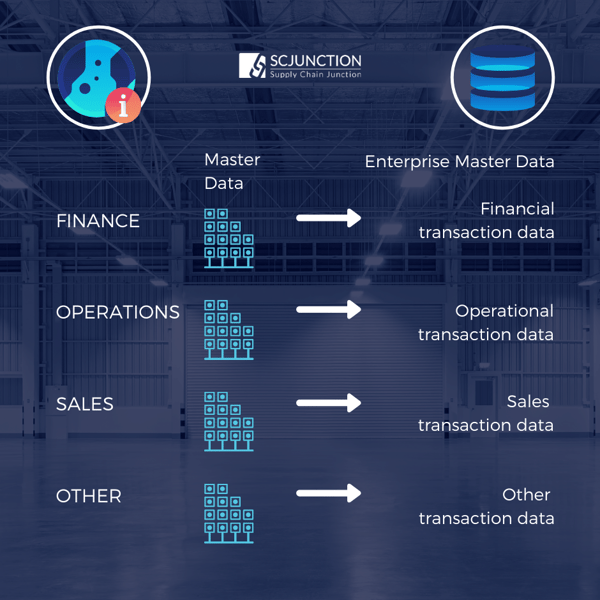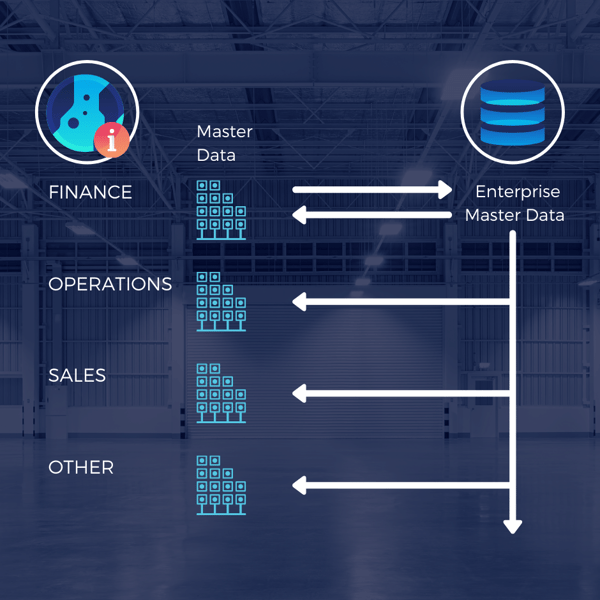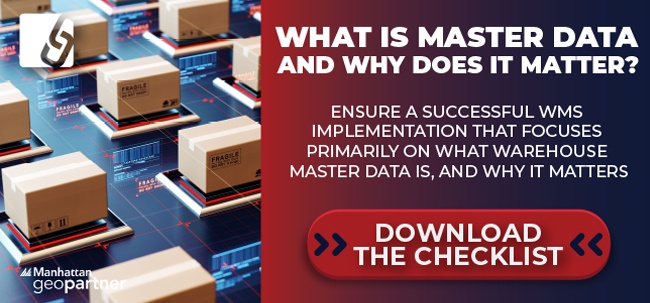More on WMS Master Data Best Practice: The Journey Ahead


With the implementation of new and varied software throughout the business landscapes, the reliance on master data and its impact to these systems is constantly and consistently growing.
Master data refers to the reference data that these systems use as their source of information to process the various transactions for which they are responsible. Without accurate and complete sets of master data, these applications cannot make the necessary computations correctly and the results can often be disastrous and time consuming to correct. - Doron Neuhaus, Supply Chain Junction
At the core of master data is setting the correct landscape for the enterprise is understanding master data, the role it plays in the system solutions, the capture and maintenance of this data and lastly the business and system’s architecture governing said data.
Master Data Best Practice
Master data best practice dictates that a single source of all reference data should be kept and that this data should be created and maintained within a single secure environment. Banks and Insurance companies that deal with large masses of data are generally the most mature and far advanced in their master data strategies and implementations with smaller wholesalers and retailers sometimes lagging many years behind.
Where does your Master Data stand?
Strategies like data ownership and data governance are foreign to many organisations that have small centralised data processing capabilities. With the advent of decentralised systems and a move towards a functional “best of breed” strategy, organisations are learning the value of master data and are being forced towards implementing formal master data management plans that may have been absent up to now.
The diagram below shows a high-level depiction of where we are coming from and where we might be going in future:

This is generally not a process that can happen overnight and takes careful and meticulous planning. Even more than planning the journey, it is imperative that the organisation defines resourcing and governance structures to allow for the long-term sustainability of this information.
Defining your data governance for sustainability
- Establishment of a Master Data section within the business supported by the relevant IT infrastructure but owned by business.
- Definition of formal Master Data creation, approval and maintenance processes including who can do what and what data is mandatory before it can be entered into the master data database.
- The appointment or training of a data architect who understands what data is required in which system and can maintain the “Golden Source” without causing inconsistencies across all the systems.
- Entrenching a culture of Data Ownership throughout the organisation where everyone understands the value of this data and contributes positively to its accuracy and completeness.
The Journey to Master Data Best Practice
The journey from current to Best Practice is not required to be in a single step and depending on the ultimate system landscape may never need to breach the requirement of a dedicated Master Data Management (MDM) product suite.
This does not mean that the basic practices should not be maintained as far as possible with the core practices being supported within the current systems environment.
The core fundamentals of Master Data
- A single source of all master data.
- A defined master data architecture defining what master data is resident in which system with no ability to manipulate that master data in any other system.
- A timeous and relevant master data update plan across the various system platforms. This must include master data updates in as close to a real-time process as is possible.
This type of approach is shown in the diagram below where all master data is kept and owned within the Finance System:

In this approach a single legacy system is chosen as the source of Enterprise Level master data and this is then shared with all other systems where this data is required. This approach may have some risk associated with it, namely:
- The legacy system is unable to incorporate all aspects of the required master data due to table constraints in the current implementation.
- Master data that is irrelevant to its core owner system may need to be stored in the core database.
This risk may result in certain master data having to be kept in another system which ultimately leads to a fragmented approach to data management and a danger of data not being properly maintained.
Master Data Governance & Maintenance
The importance of master data requires a formalised process of governance and maintenance to be implemented to ensure it conforms to the criteria and requirements formulated at an enterprise level. Master data will be used across multiple system platforms and as such this requires a policy of “fit for purpose” for the target systems meaning that values currently used in certain fields may need to be rationalised, expanded or changed where possible or necessary.
With all these factors taken into consideration, it is essential that a Data Driven policy is established that has committed resources assigned to it. This may include:
- Master data policy documents – including version control, change and release management, approval structures and limited access.
- Master data capture templates including:
- Mandatory fields.
- Defined field lengths, masks, and templates.
- Target system’s requirements.
The maintenance of master data should become a core component of the daily business functions with reports of issues being produced and responsibility of correction being assigned.
Core to the concept of this being Enterprise Data is that the Master Data is owned by business supported by IT and NOT owned and maintained by IT. This will require a shift in the current view of data within the organisation and the acceptance by business that the data that is fundamental to the effective functioning of operational systems rests in their hands.
Failure to provide and maintain accurate and complete master data could have disastrous effects on the downstream target systems that rely on that data.
It is recommended that a Master Data Owner is identified in the business. This person will retain overall control and accountability to ensure that master data is kept accurate and all policies are adhered to. It is essential that this person understands the extent to which the data will be used and can provide guidance and leadership to all staff and vendors on the policies, guidelines and availability of master data within the enterprise.
Conclusion
The acceptance and implementation of a complete Master Data strategy is not something that can happen overnight. The journey from “As Is” to “To Be” can prove difficult and painful but will be worth it once the value of single golden sources of data are established and well maintained.
A formalised plan of transition should be established with realistic timelines and milestones including architecture and cleansing programs.
Download our Master Data Checklist to see how you can begin this process:
TAGS
- WMS (51)
- Warehouse Best Practice (46)
- Implementing a WMS (29)
- Managing your warehouse (19)
- Omni Channel (18)
- eCommerce (18)
- Blog (16)
- Supply Chain Best Practice (16)
- Mid-Level (8)
- Customer Journey (7)
- Warehouse optimisation (7)
- General Tips (5)
- Industry General (5)
- Information (5)
- Trends (5)
- managing your Supply Chain (5)
- saudi arabia (5)
- smart warehouse (4)
- 3PL (3)
- News (3)
- ERP (2)
- Entry-level (2)
- ROI (2)
- Case Study (1)
- OMS (1)
- Picking (1)
- Press Release (1)
- Solution-Specific (1)
- Transport Management System (1)
Take A Look At The Results Of A Successful WMS Implementation.
See how Tarsus Distribution, in collaboration with SCJ boost overall efficiency by 60%





